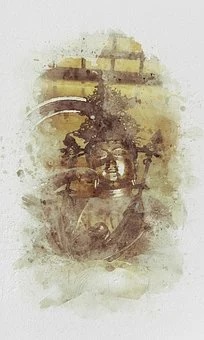Buddha-dharma is not a philosophy to be appreciated from afar. Its wisdom is directly accessible and relevant to our problems in life. Unfortunately, most followers do not progress beyond an intellectual understanding of the Dharma, even those who have studied the five major treatises – Middle Way, logic, prajnaparamita, and other profound and significant texts. When confronted with life’s unexpected difficulties, they are lost and unable to put the teachings into practice. This is like a soldier who is armed with very sophisticated weapons; when confronted by the enemy, he is caught by surprise and does not know which weapon to use. How regrettable!
~Depicted from ARE YOU READY FOR HAPPINESS - How to Face Suffering and Happiness-How to Face Suffering










